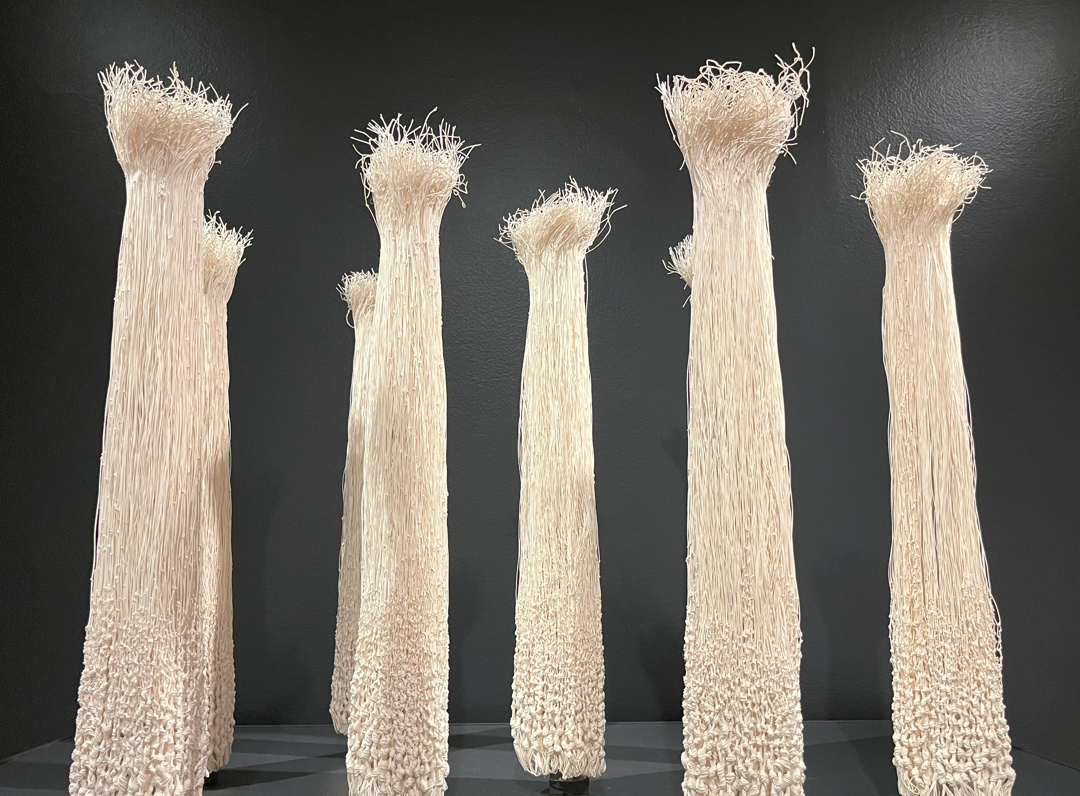The Dayton Art Institute currently has an exhibit on display “Washi Transformed.” It is New Expressions in Japanese Paper. I have actually never seen such a quite extensive and immersive display of paper in my life. I was simply amazed. One of the pieces you see right when you walk in is a triptych of round flower shapes on the wall. They kind of give the feeling of a texturized painting.
One of the artists, Yuko Nishimura, said, “When you fold paper it becomes structurally stronger. . . There is a special, mutually beneficial relationship between the unique characteristics of paper and the act of folding. Folding is an expression of the spirit of the Japanese people – not simply a functional action but a meditative way to create a form.”
I would say that this feeling translates well when looking at the artwork. I definitely felt meditative when looking around the room. It was peaceful and calm.
Some of my other favorite pieces were created by Eriko Horiki. They are made out of Washi paper and a resin mold and then they have light being displayed through them. They almost remind me of those paper hanging lanterns you can find at IKEA. But the shapes of them remind me of salt lamps. They were displayed very nicely next to each other to emphasize their different shapes and sizes.
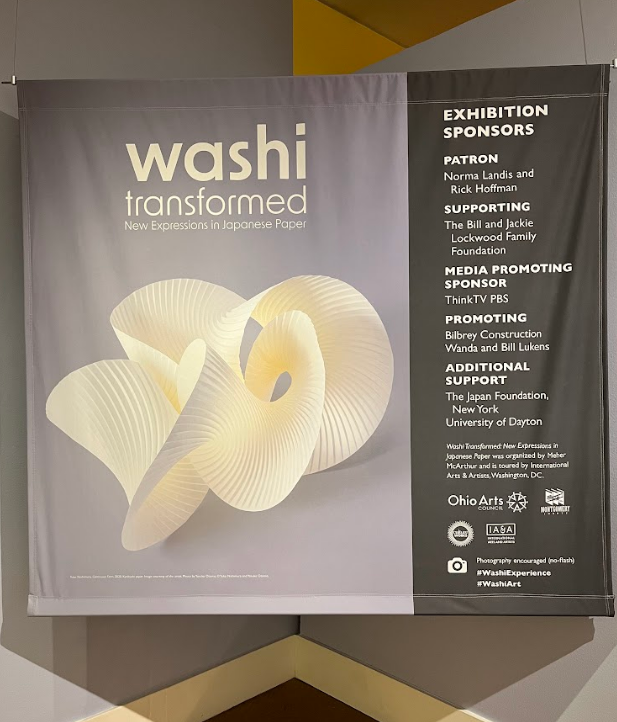
The Japanese Paper Strings Musubu R by Kakuko Ishii was another favorite of mine. It’s a bunch of these little red figures displayed in the corner on different sized shelves. Immediately I thought of Dr. Seuss and his drawings. I also really enjoyed the fact that each piece was the exact same size so it looked like there was a bunch of copies on display. Another unique feature was how the display was put in the corner and then extended outward onto to separate walls.
I have two favorite pieces from the entire exhibit. The first one was called Japanese Paper Strings Musubu W1 by Kakuko Ishii. It’s a collection of these tall white pillars made by a bunch of strings of paper. Each one is the same height and shape and the display has a black background, which is the perfect contrast for the white artwork. They almost appear to be looming over your head. I had the feeling of trees, but then because of the coloring, it made me think of post-apocalyptic trees. Which was very interesting. I stood and looked at this display for several minutes before moving on.
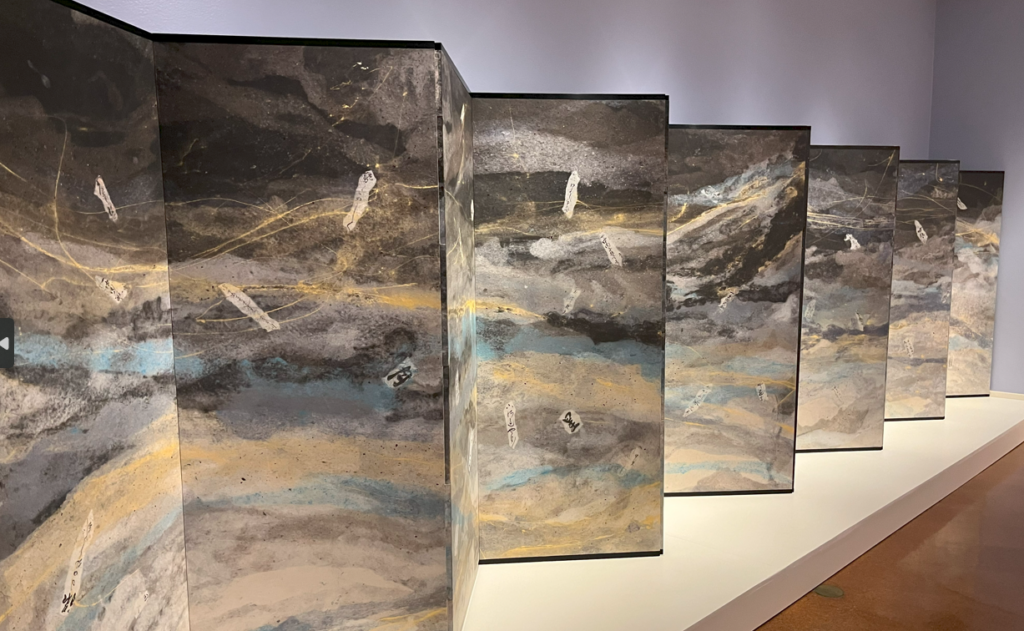
But my all-time favorite was ‘Land of Nest’ by Takaaki Tanaka. It is made out of Kozo (mulberry fiber paper), flax, and iron. The concept is so simple. It’s just a giant brown square on the floor. But the longer I looked at it, the more interesting it became. Instead of just one giant square, it looks like it is several small squares that have been fused together. Each individual square has a little dip in the middle. So while at first glance it appears to have a flat surface, it is almost more like a wave, dipping and then coming back up. The way the fibers are structured reminds me of a spider web. I really enjoy has some of the fibers aren’t closed off at the ends. It gives the piece a feeling of being spiky if you were to touch it. According to the display, “[Takaaki] often applies kozo fibers to an assemblage of stretched threads, using the collective tension to form a freestanding sculpture.”
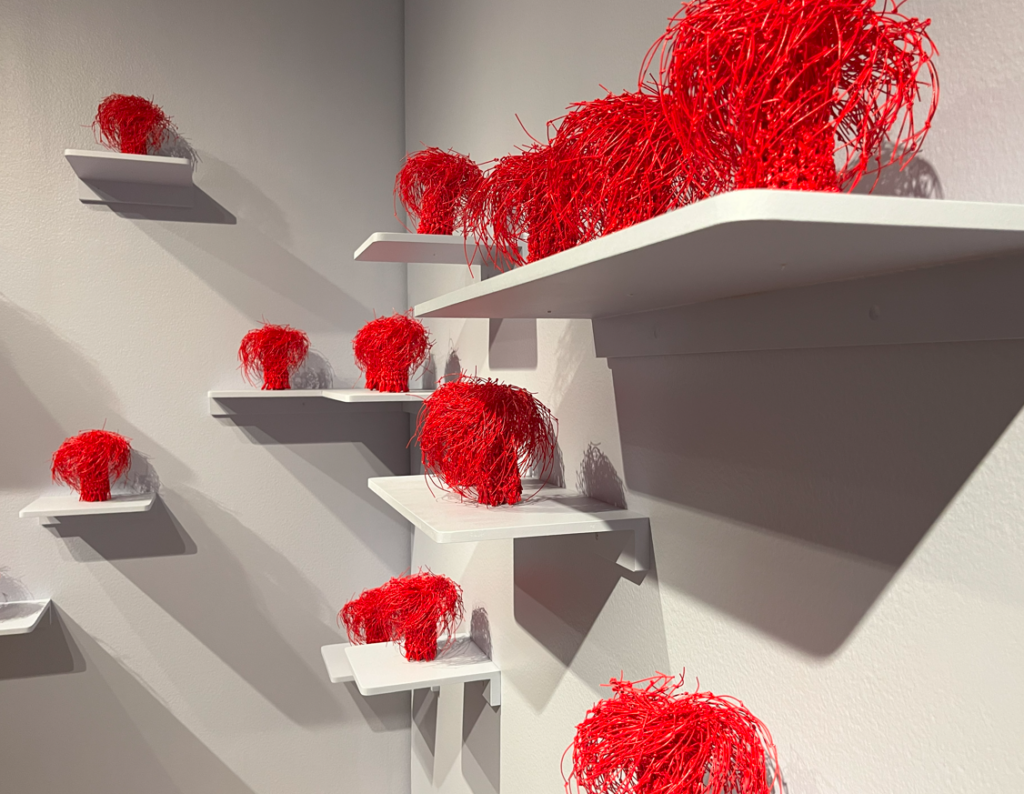
There are several other large pieces on display throughout the exhibit. The entire collection takes up several rooms in the DAI. I would like to invite you to visit to see them for yourself. The exhibit goes through September 17 and as a student you get free admission.
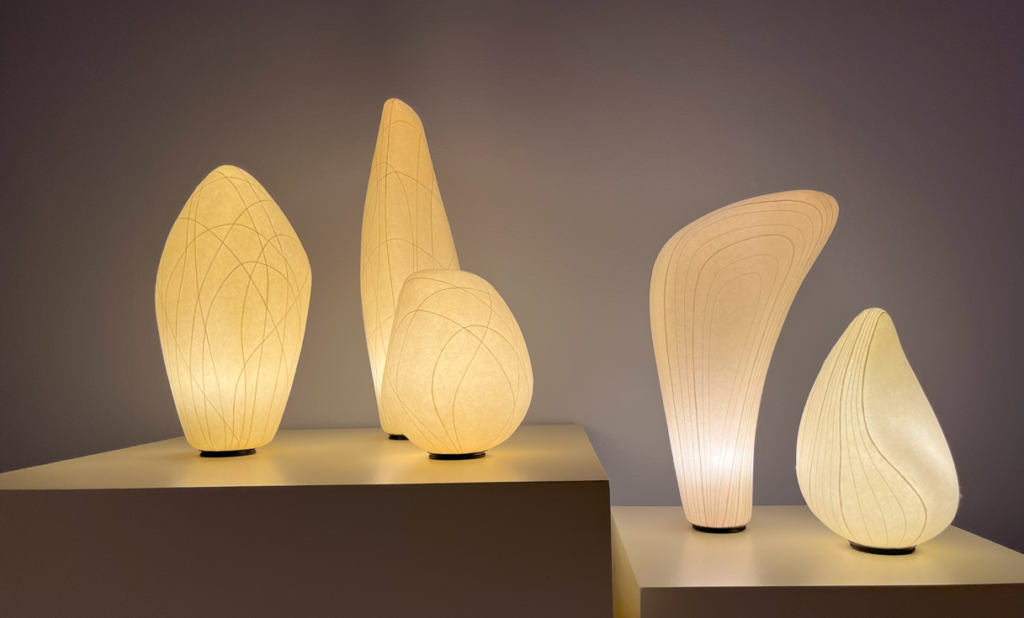
Jamie Herzog
Associate Editor

